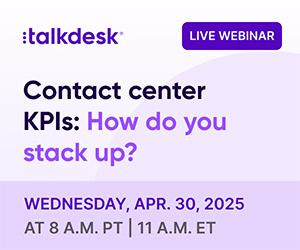Jim Fleming at Sabio lists some of the key areas of the proposed bill – and touches on the potential impact on the contact centre.
The new Labour government in the UK has introduced an Employee Rights Bill aimed at strengthening worker protections and enhancing employee welfare across various industries.
The bill proposes significant reforms in areas such as job security, flexible working, pay transparency, and union rights. These changes will inevitably have a profound impact on workforce planning, particularly in contact centres, where labour management is a critical component of operational efficiency.
Key Provisions of the Employee Rights Bill
1. Strengthened Job Security
The bill proposes tighter regulations around unfair dismissals and redundancies. Contact centre employers will face stricter guidelines when making termination decisions, which will reduce the flexibility of laying off workers due to fluctuating call volumes or seasonal changes.
This will require contact centres to be more strategic in workforce planning to avoid unnecessary dismissals and potential legal repercussions.
2. Right to Flexible Working
One of the most prominent elements of the bill is the right to flexible working, which would be available to all employees from day one.
For contact centres, where shift work is the norm, accommodating employees’ flexible working requests will add a layer of complexity.
Workforce planners will need to adopt more sophisticated scheduling tools and strategies to ensure that customer demand is met without compromising employee satisfaction.
3. Pay Transparency and Equal Pay
The Employee Rights Bill aims to increase pay transparency and address pay inequality. Employers will be required to disclose salary ranges in job advertisements and ensure that men and women doing similar roles are paid equally.
In contact centres, where a large percentage of the workforce is employed at entry-level or part-time, pay reviews and audits will become more frequent.
Workforce planners will need to ensure that budgeting for salaries and wages is more transparent and equitable, which could lead to pay adjustments and increased staffing costs.
4. Union Rights and Collective Bargaining
Another significant aspect of the bill is the strengthening of trade union rights. It encourages greater union participation in workplace decisions and promotes collective bargaining.
Looking at the contact centre, where a high level of workforce engagement is essential to maintaining performance, this could lead to more structured negotiations around working conditions, pay, and benefits.
As a result, workforce planners will need to account for potential disruptions and the need for more collaboration with unions. We already see this approach in place within countries such as Germany and Austria with ‘Workers Councils’.
5. Improved Worker Protections for Gig and Zero-Hour Contracts
The bill also targets gig economy workers and those on zero-hour contracts, granting them greater job security and better working conditions. Many contact centres employ staff on flexible or zero-hour contracts to manage fluctuating call volumes.
With the new protections, a reduced reliance on such contracts will be required, with a focus on offering more stable employment options. This will require a shift towards more predictable workforce models, which may affect cost management and flexibility.
Implications for Workforce Planning; Structure and Compliance Is key
The proposed reforms mean that workforce planning in contact centres will need to become more structured and compliant with new regulations. Flexible scheduling will be essential, especially with the push for flexible working rights.
Workforce planners will need to rely more on technology such as advanced workforce management software to handle complex scheduling requests, track employee working hours, and ensure compliance with pay transparency regulations.
An investment in employee engagement and communication will be needed, especially with the growing influence of trade unions.
By fostering a collaborative environment and adhering to the principles of the new Employee Rights Bill, contact centres can not only avoid potential legal challenges but also improve employee morale, leading to higher retention and better performance.
It’s clear though that the proposed Employee Rights Bill is set to reshape the workforce landscape in the UK – and contact centres will be significantly impacted.
While the changes present challenges – particularly around scheduling, pay equity, and employee flexibility – they also offer an opportunity for businesses to modernise workforce planning strategies and create a more stable and engaged workforce.
This blog post has been re-published by kind permission of Sabio – View the Original Article
For more information about Sabio - visit the Sabio Website
Call Centre Helper is not responsible for the content of these guest blog posts. The opinions expressed in this article are those of the author, and do not necessarily reflect those of Call Centre Helper.
Author: Sabio
Reviewed by: Rachael Trickey
Published On: 3rd Oct 2024 - Last modified: 22nd Oct 2024
Read more about - Guest Blogs, Jim Fleming, Sabio






 Sabio Group is a global digital customer experience (CX) transformation specialist with major operations in the UK (England and Scotland), Spain, France, Netherlands, Malaysia, Singapore, South Africa and India. Through its own technology, and that of world-class technology leaders such as Amazon Connect, Avaya, Genesys, Google Cloud, Salesforce, Twilio and Verint, Sabio helps organisations optimise their customer journeys by making better decisions across their multiple contact channels.
Sabio Group is a global digital customer experience (CX) transformation specialist with major operations in the UK (England and Scotland), Spain, France, Netherlands, Malaysia, Singapore, South Africa and India. Through its own technology, and that of world-class technology leaders such as Amazon Connect, Avaya, Genesys, Google Cloud, Salesforce, Twilio and Verint, Sabio helps organisations optimise their customer journeys by making better decisions across their multiple contact channels. 





























